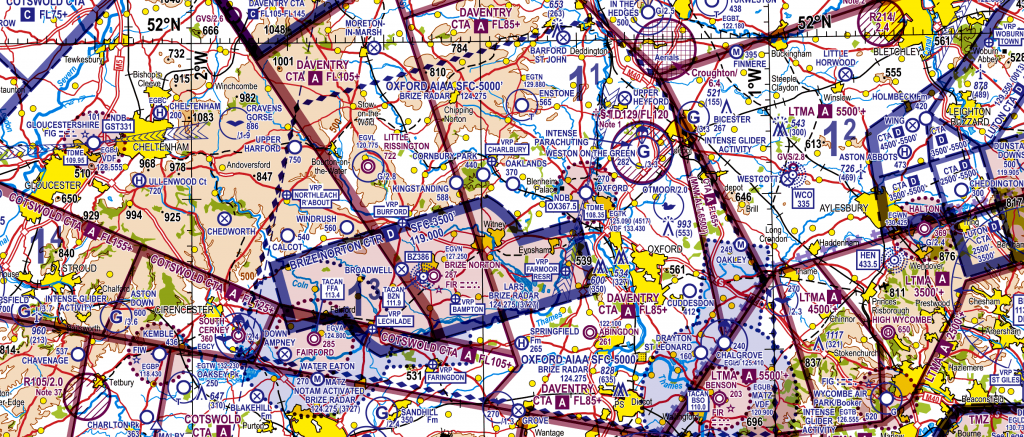Airspace
Image from CAA/NATS – not for navigation purposes
Pilots must plan to avoid known hazards and remain compliant with the law. To do so, all pilots must have a good understanding of airspace structures and associated rules, and check NOTAMs before flight.
This page links to three other webpages (click on the section heading to access the webpage):
Including:
- Introduction to airspace
- Aerobatics displays
- ATZs
- Danger Areas and Temporary Danger Areas
- Instrument Procedural Traffic
- MATZ
- NOTAMs
- Parachute Drop Zones
- RA(T)
- Rules of the air
- TMZ/RMZ
- Non-transponder areas above FL100
Including:
- Lookout – supported by electronic conspicuity
- Airprox
- Altimetry
- Avoiding infringements
- Charts
- D&D
- GPS and moving maps
- LOAs
- NOTAMs
- Task setting
- Winch launch overflights
- VRPs
Including:
- AICs
- AIP
- Airspace modernisation
- Awareness of gliding needs
- Drones/RPAS
- Responding to an airspace change proposal
Notifying concerns about airspace access or air traffic service refusal
If you have concerns about airspace access or if you are unreasonably refused access to airspace, please complete the CAA Form FCS 1522.
Freedom to fly – you can help!
The BGA Airspace Committee works with other airspace stakeholders with the aim of maintaining reasonably safe airspace, equitable access to airspace, and freedom of movement across the UK for gliding. The task is ongoing and growing as an increasing amount of airspace is being demanded for the exclusive use of commercial operations. Volunteer assistance is always welcome. Airline pilots have particularly valuable experience. If you can help, please contact the BGA Airspace Committee chairman via the BGA office.
